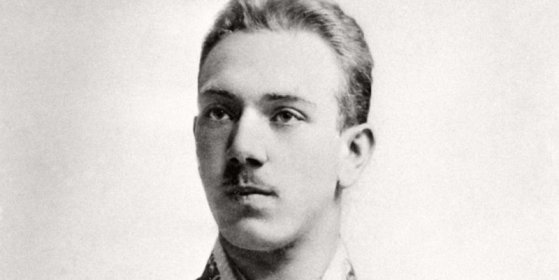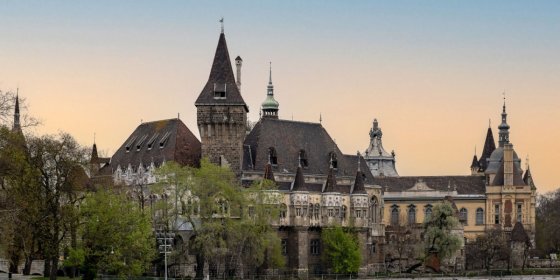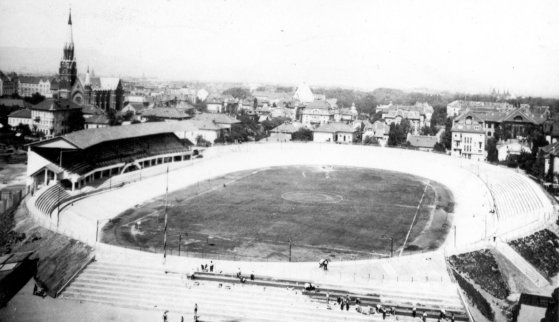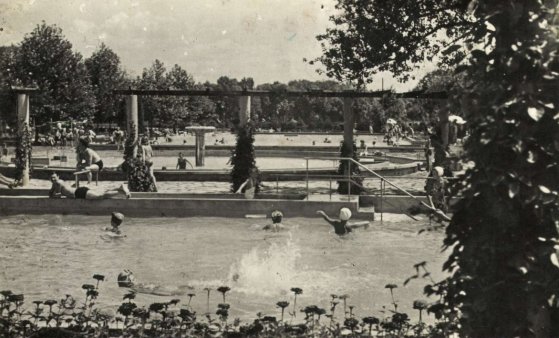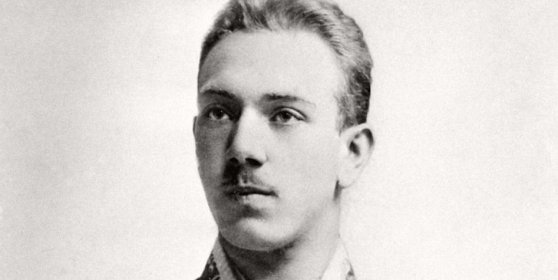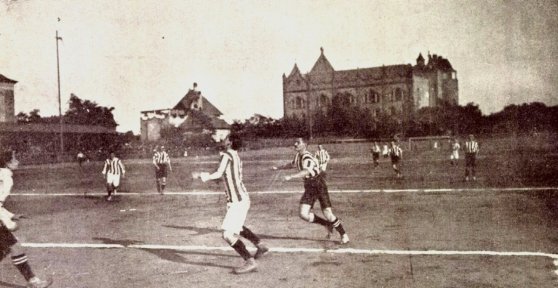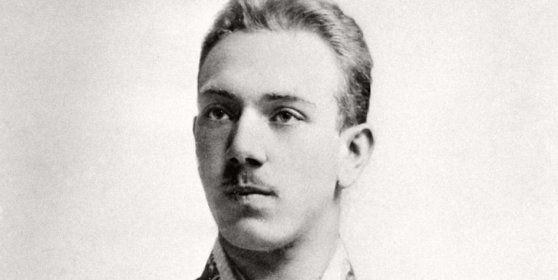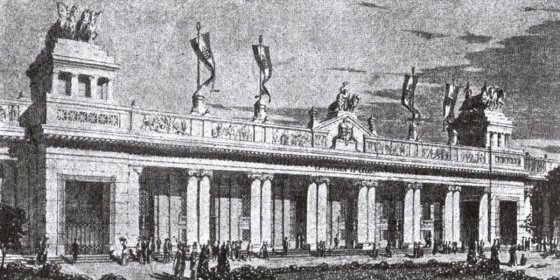 The „intertwined history” of the bridges and the city of Budapest
Which ideas and events have shaped the fate of bridges of Budapest and the cityscape? Alongside many other interesting facts, this question is also answered this newly published book by the Budapest City Archives, which introduces the history of bridges in Budapest.
The „intertwined history” of the bridges and the city of Budapest
Which ideas and events have shaped the fate of bridges of Budapest and the cityscape? Alongside many other interesting facts, this question is also answered this newly published book by the Budapest City Archives, which introduces the history of bridges in Budapest.
Alfréd Hajós
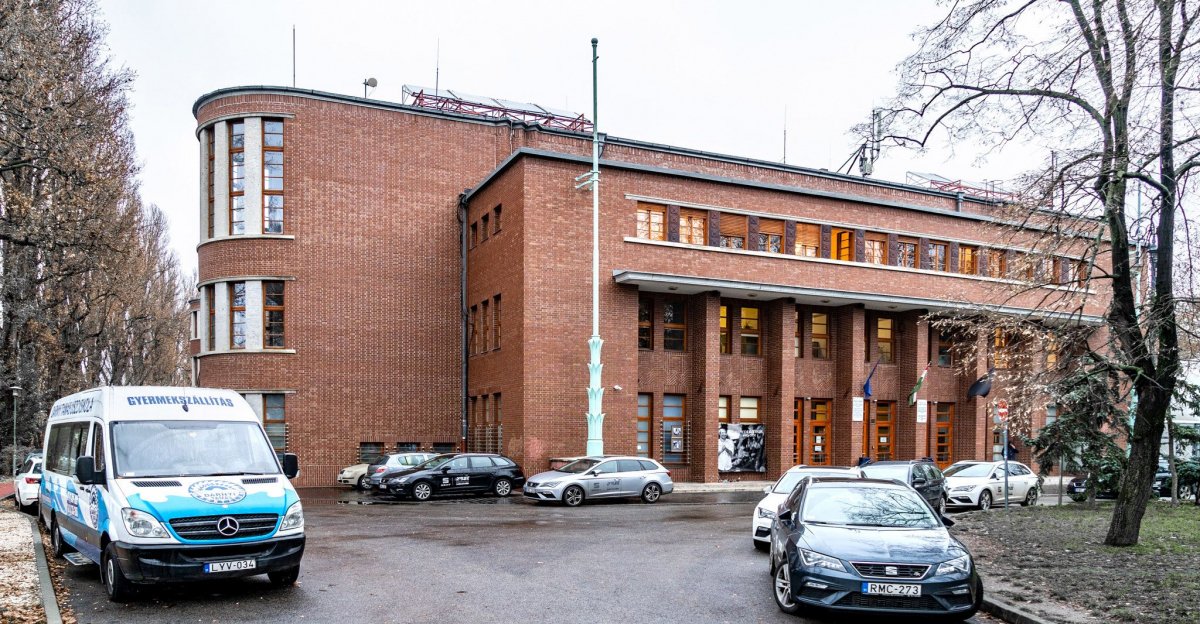 The first Hungarian Olympic champion became a famous architect - Alfréd Hajós was born 145 years ago
The first Hungarian Olympic champion became a famous architect - Alfréd Hajós was born 145 years ago
February 1, 2023 at 11:00 AM
Hungary is considered a great power in water sports, which was already foreshadowed by the glory of our first Olympic champion: Alfréd Hajós won Hungary's first gold in swimming. At the Athens competition, he was only eighteen years old, so he had to choose a career after his victory, and the swimmer nicknamed the Hungarian Dolphin became an architect. In the first half of the 20th century, Alfréd Hajós, who was born 145 years ago, achieved good results in this field as well, his works were of the high standard of the era.
A statue pays tribute to the legacy of Alfred Hajós
November 28, 2021 at 3:00 PM
The Hungarian Jewish Cultural Association (Mazsike) and the MANK Hungarian Creative Public Nonprofit Ltd. want to pay tribute to Alfred Hajós, first champion of the modern Olympic games.
Vajdahunyad Castle was rebuilt for The Museum and Library of Hungarian Agriculture, founded 125 years ago
July 27, 2021 at 9:00 AM
Vajdahunyad Castle, located on the former Széchenyi Island of the Városliget Lake, has been very popular since 1896. With its special appearance and unique atmosphere, it attracts tens of thousands of visitors. Walking between its walls and characteristic parts of the building, one can travel a long way in time and space from the Highlands to Transylvania, from the Romanesque to the Baroque period. And the walls hide one of Europe’s largest agricultural collections and museums, celebrating its 125th anniversary this year.
The first Hungarian international football match was played at the Millenáris in Zugló - The field called the cradle of Hungarian sports is 125 years old
June 30, 2021 at 4:00 PM
Today, when it comes to the Millenáris everyone thinks of the popular Buda park, although the Pest side also has its own Millenáris. The Millenáris in Zugló, which is the first sports field in Budapest, has been operating for 125 years, and many also refer to it as the cradle of Hungarian competitive sports. The tilted winding cycling track, the velodrome, was already one of the most modern tracks of its time when it was built, after its reconstruction in 1927, tens of thousand supporters flooded the grandstand during the world championship organized here. The first public international football match in Hungary was held here.
Medicinal water was found on Whitsun in the area of today's Pünkösdfürdő Bath
May 24, 2021 at 9:00 AM
The story is almost like a fairy tale because from the moment Sándor Ember, a legal adviser, and later Member of Parliament accidentally learned about the intention to parcel the area near Békásmegyer during a rowing tour on the Danube and bought the land after a quick decision, it was as if everything turned into gold. It soon became clear that the area had unparalleled archaeological finds across Europe and then on Whitsun in 1934, medicinal water was found on the plot, where soon, in the summer of 1935, a bath now known as Pünkösdfürdő ('Whitsun Bath') opened.
Széchenyi cycled for the first time on the banks of the Danube - the postal servants rode velocipedes
April 23, 2021 at 9:00 AM
The first velocipedes on the streets of Pest-Buda caused a great sensation in the late 1860s. By the 1880s, the bicycle had conquered Budapest: associations, cycling schools were formed, social trips, parades and competitions were organized. The capital's postal servants rode velocipedes, and the army also used the vehicles. A World Cycling Championship was also held in the capital. In 1928 the Millenáris Velodrome was the most modern and fastest cycling track in Europe.
Alfréd Hajós, Hungary's first Olympic champion, learned to swim on the Danube section in front of the Parliament
April 13, 2021 at 9:00 AM
As an outstanding talent, Alfréd Hajós created something unique in many sports and his chosen profession, architecture. He won the first Olympic champion title for Hungary when 125 years ago; in addition to the 100-meter sprint, he also won the 1,200-meter race in the sea-swimming competition held on 11 April 1896, near Athens. As an architect, he designed, among others, the National Sports Swimming Pool on Margit Island and the synod headquarters of the Reformed Church in Zugló.
We need a team! - First professional football match in Hungary played 120 years ago
February 3, 2021 at 11:00 AM
Football spread from England to Hungary in the 1890s. The Hungarian Football Association was founded 120 years ago in 1901, and in the same year, the first Hungarian football championship began. Budapest Torna Club (BTC – 'Budapest Gymnastics Club') became the first winning team, with the Olympic champion architect, Alfréd Hajós in its ranks. The BTC remained the dominant team in the league for a few years and was soon succeeded by MTK and FTC.
Statue of Alfred Hajós planned for Margit Island
December 28, 2020 at 2:00 PM
A tender has been announced for the creation of a statue of Alfred Hajós. The sculpture will be erected on Margit Island, which is connected to Alfred Hajós's intellectual and professional heritage.
Budapest, the 1920 Olympics and the storms of history
November 28, 2020 at 9:00 AM
Hungarian athletes and sports fans have long been preoccupied with the question of when Budapest will host the Olympic Games. Budapest has applied several times and even won the right to host the 1920 Olympics 100 years ago. Many plans for the various buildings were drawn up but World War I pushed history in a different direction. In the centenary of this failed bid, join PestBuda in a glace through the plans, and what was realised of them.
Breathtaking panorama for high-altitude bathing – The forgotten memories of swimming on Svábhegy
August 11, 2020 at 1:00 PM
At the time of its construction, the Svábhegy open-air pool was characterised as an “artistic and significant work for tourism” at the opening in July 1934. The former spa, located at 430 metres above sea level, designed by our legendary athlete and architect, Alfréd Hajós, deserved the attributes above with its beautiful geographical location and cleverly solved architectural realisation.
More articles
 The „intertwined history” of the bridges and the city of Budapest
Which ideas and events have shaped the fate of bridges of Budapest and the cityscape? Alongside many other interesting facts, this question is also answered this newly published book by the Budapest City Archives, which introduces the history of bridges in Budapest.
The „intertwined history” of the bridges and the city of Budapest
Which ideas and events have shaped the fate of bridges of Budapest and the cityscape? Alongside many other interesting facts, this question is also answered this newly published book by the Budapest City Archives, which introduces the history of bridges in Budapest.
 The Bridge Report, which brought a turning point in the history of Budapest
A travel report that changed the history of Pest and Buda, as well as Hungary. The little book contributed to the change of half a thousand years of legal customs and the implementation of an investment of unprecedented size and technical quality. This book was The Bridge Report [Hídjelentés in Hungarian].
The Bridge Report, which brought a turning point in the history of Budapest
A travel report that changed the history of Pest and Buda, as well as Hungary. The little book contributed to the change of half a thousand years of legal customs and the implementation of an investment of unprecedented size and technical quality. This book was The Bridge Report [Hídjelentés in Hungarian].
 Drama on the university wall - The heroic monument was planned 95 years ago
In the constant hustle and bustle of the Egyetem Square in Pest, the students may not even notice the monument that decorates the short section of wall between the church and the central building of ELTE. However, it commemorates their predecessors, the heroes who fought for their country in World War I, and those who heroically helped them. The first design of the dramatically collapsing soldier was born in 1928, ninety-five years ago.
Drama on the university wall - The heroic monument was planned 95 years ago
In the constant hustle and bustle of the Egyetem Square in Pest, the students may not even notice the monument that decorates the short section of wall between the church and the central building of ELTE. However, it commemorates their predecessors, the heroes who fought for their country in World War I, and those who heroically helped them. The first design of the dramatically collapsing soldier was born in 1928, ninety-five years ago.

